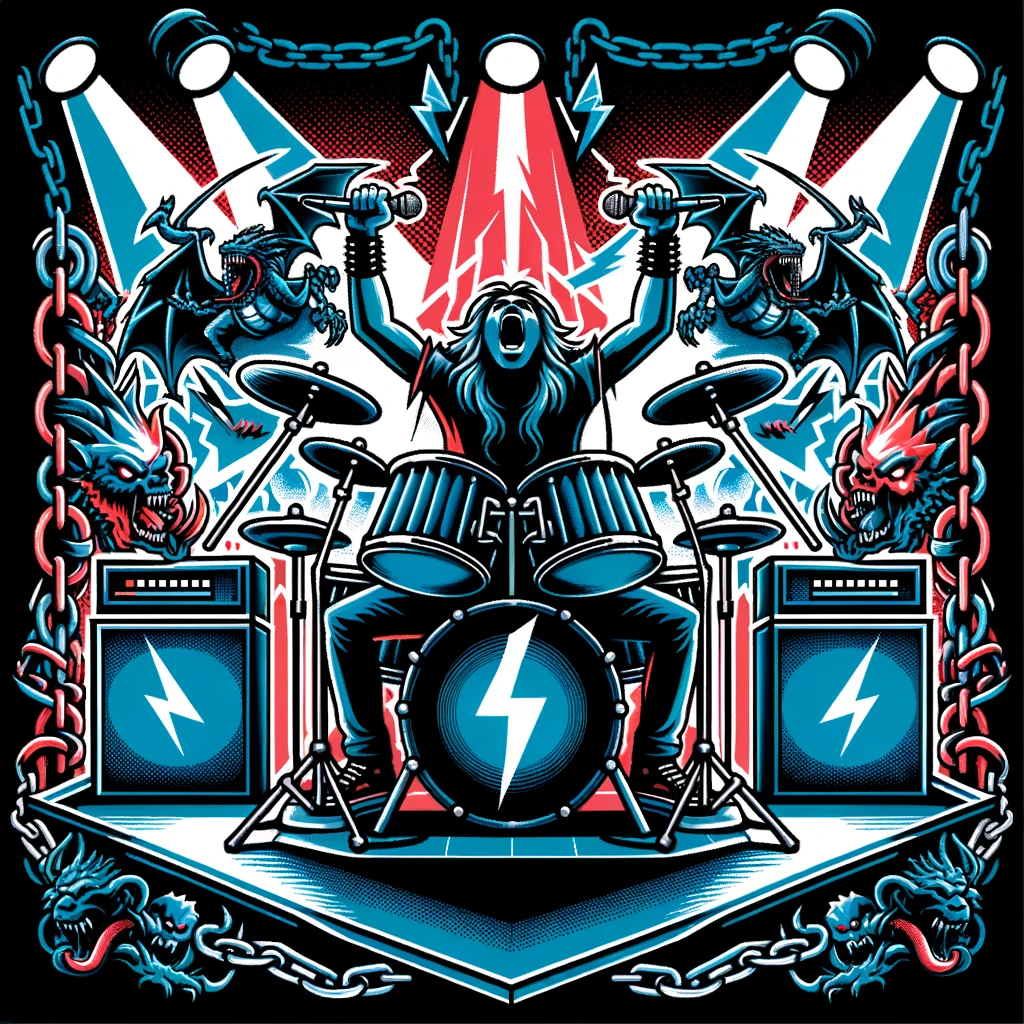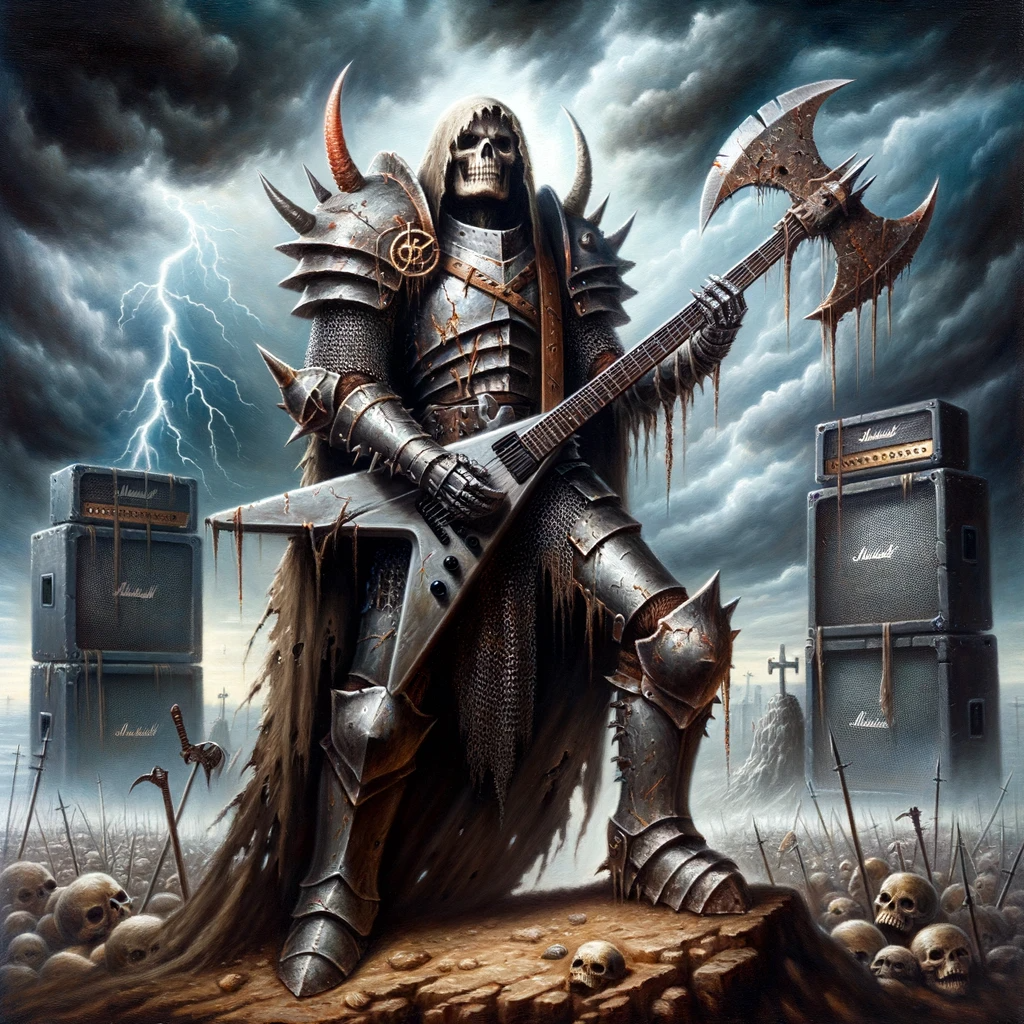When one thinks of heavy metal, the mind conjures images of thunderous guitar riffs, pounding drums, and electrifying solos. This genre of music has not only forged a powerful identity in the world of music but has also woven its influence into the tapestry of popular culture. From movies and video games to fashion and literature, heavy metal has made its indelible mark. In this exploration, we’ll dive deep into the roaring thunder of heavy metal in popular culture and how it has left an enduring legacy.

The Birth of a Beast
Before we delve into the present, it’s crucial to understand the origins of heavy metal. Emerging in the late 1960s and early 1970s, heavy metal was a rebellious response to the flower power era. Bands like Black Sabbath and Led Zeppelin cranked up the volume and added a dark, gritty edge to rock music. With distorted guitars, powerful vocals, and lyrics often exploring themes of rebellion, fantasy, and the macabre, heavy metal quickly became a counter-cultural phenomenon.
Music
The heart and soul of heavy metal lies in its music. Defined by its loud, aggressive sound, heavy metal has spawned numerous subgenres, each with its unique characteristics. Bands like Metallica, Iron Maiden, and Slayer have achieved legendary status, while newer acts like Slipknot and Lamb of God continue to push the boundaries of the genre.
Heavy metal’s influence on music extends beyond its own genre. Elements of metal can be found in diverse musical styles, from hard rock to even pop music. Bands like Guns N’ Roses and AC/DC have incorporated metal-inspired guitar solos and riffs into their songs, making heavy metal an integral part of the rock landscape.

Movies
One of the most prominent ways heavy metal has infiltrated popular culture is through the silver screen. Many iconic films have embraced heavy metal’s rebellious spirit and sonic power. Let’s not forget the epic soundtrack of “The Terminator,” featuring Brad Fiedel’s haunting synthesizer score, which is often cited as a precursor to the industrial metal sound.
Another classic example is “This Is Spinal Tap,” a mockumentary that hilariously parodies the excesses and absurdities of rock bands. This film’s satirical take on the music industry has endeared itself to metalheads and non-metal fans alike, becoming a cult classic.
Horror movies, too, have a long-standing association with heavy metal. Films like “The Devil’s Candy” and “Deathgasm” use metal as a backdrop to tell tales of demonic possession and supernatural horror. The aggressive, high-energy music amplifies the tension, creating a sensory overload that keeps audiences on the edge of their seats.
Video Games
The marriage of heavy metal and video games is a match made in heaven, or perhaps, in hell. The genre’s adrenaline-pumping tunes are the perfect accompaniment to intense gaming experiences. Games like “Doom” and “Guitar Hero” have fully embraced the heavy metal aesthetic, infusing it into the gameplay and soundtrack.
“Doom,” in particular, is synonymous with heavy metal. Its fast-paced, demon-slaying action is set to a backdrop of aggressive metal music that fuels players’ adrenaline. The game’s influence on the heavy metal scene is reciprocal, as bands like Mick Gordon’s “Doom (2016)” soundtrack have created iconic, face-melting metal tracks inspired by the game.
Fashion
Heavy metal fashion is a unique subculture in itself. The look is often characterized by leather jackets, band t-shirts, studded belts, and, of course, an array of metal band patches sewn onto denim vests. The heavy metal aesthetic celebrates rebellion and individualism, encouraging fans to embrace their inner wild side.
The influence of metal fashion can be seen in designer collections, with renowned fashion houses incorporating elements like studs, leather, and metallic accents into their creations. The rock ‘n’ roll attitude of heavy metal is timeless, making it a source of inspiration for fashion designers worldwide.
![]()
Literature
The written word has also been touched by the flames of heavy metal. Numerous books and novels draw inspiration from the genre, exploring its themes and cultural significance. From autobiographies of legendary musicians like Ozzy Osbourne’s “I Am Ozzy” to scholarly works dissecting the philosophy of heavy metal, literature has delved deep into the genre.
Moreover, heavy metal has made its way into the world of fiction. Authors like Neil Gaiman and Clive Barker have incorporated heavy metal themes and imagery into their stories, creating a unique blend of dark fantasy and rock ‘n’ roll.
In conclusion, heavy metal’s indomitable presence in popular culture is undeniable. This genre, which emerged as a sonic rebellion, has evolved into a multi-faceted force that transcends music. From movies and video games to fashion and literature, heavy metal has left an enduring mark that continues to inspire and captivate generations.
As we navigate the ever-evolving landscape of popular culture, heavy metal stands tall as a symbol of individualism, rebellion, and unapologetic self-expression. Its roaring thunder can be heard not just in the music but in the hearts of countless fans who have embraced the spirit of metal and carried it into every corner of their lives.
So, whether you’re headbanging at a concert, battling demons in a video game, or simply donning a leather jacket and cranking up your favorite metal album, remember that heavy metal is more than just music—it’s a way of life, an enduring symbol of defiance, and a relentless force in popular culture.
Go follow me on social media or head back to the home page to read something else.





